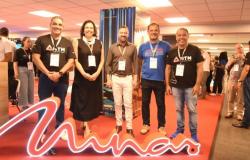The European Center for Nuclear Research (CERNin the French acronym European Council for the Recherche Nucléaire) is the largest laboratory for physical of particles in the world. It was created in 1950, five years after the end of the Second World War, in the same context as other organizations that sought to resolve international conflicts, such as the UN. The idea was to have a research space so that scientists from the West and East could work together. This is exactly why he stays in Geneva, Switzerland – a country with a history of neutrality.
International collaboration in CERN it yielded numerous important research studies – three of which won Nobel Prizes. The internet, for example, started there as a communication system between computers. CERN is also home to the largest particle accelerator in the world, the Large Hadron Collider (LHC), responsible for experimentally confirming the existence of the Higgs boson, the “God particle”.
Now, Brazil also joins the group of members of the CERN. On March 3, 2022, the Director General of CERN, Fabiola Gianotti, and the then Minister of Science, Technology and Innovation of Brazil, Marcos Pontes, signed an agreement admitting the country’s entry into the Center.
Two years later, it was announced that the country had completed the internal approval processes and is, since March 13, 2024, officially an Associate Member State of CERN. It is the first country in the Americas to have this participation status.
Continues after advertising
“We are very pleased to welcome Brazil as an Associate Member State. Over the past three decades, Brazilian scientists have contributed substantially to many CERN projects,” he said Gianotti in 2022. “This agreement allows Brazil and CERN to further strengthen our collaboration, opening up a wide range of new and mutually beneficial opportunities in fundamental research, technological development and innovation, and education and training activities.”
Brazil and CERN have a history of cooperation that long precedes this entry. In 1990, with the signing of an International Cooperation Agreement, Brazilian researchers were able to participate in an experiment in accelerator of particles Large Electron and Positron Collider (LEP).
In the last decade, Brazil’s experimental particle physics community has doubled in size, and cooperation with CERN has only increased. Only in the four main experiments of the LHC, around 200 Brazilian scientists, engineers and students collaborate in areas ranging from hardware and data processing to physical analysis. Today, Brazilian institutes participate in all the main LHC experiments.
In addition to particle physics, the CERN and Brazil’s National Center for Research in Energy and Materials (CNPEM) have also formally cooperated since December 2020 in research and development of accelerator technology and its applications.
Continues after advertising
As an Associate Member State, the Brazil will have the right to nominate representatives to participate in meetings of the Council of CERN and the Finance Committee. Brazilians will be eligible to apply for limited-term positions and CERN postgraduate programs, and industries can compete for CERN contracts, increasing opportunities for industrial collaboration in advanced technologies.
Currently, CERN has 23 member countries: Austria, Belgium, Bulgaria, Czech Republic, Denmark, Finland, France, Germany, Greece, Hungary, Israel, Italy, Netherlands, Norway, Poland, Portugal, Romania, Serbia, Slovak Republic, Spain, Sweden, Switzerland and United Kingdom .
In addition to them, there are also 8 countries that are Associate Members: Brazil, Croatia, India, Latvia, Lithuania, Pakistan, Turkey and Ukraine are Associate Member States. The United States and Japan have observer status.
Share this article via:






